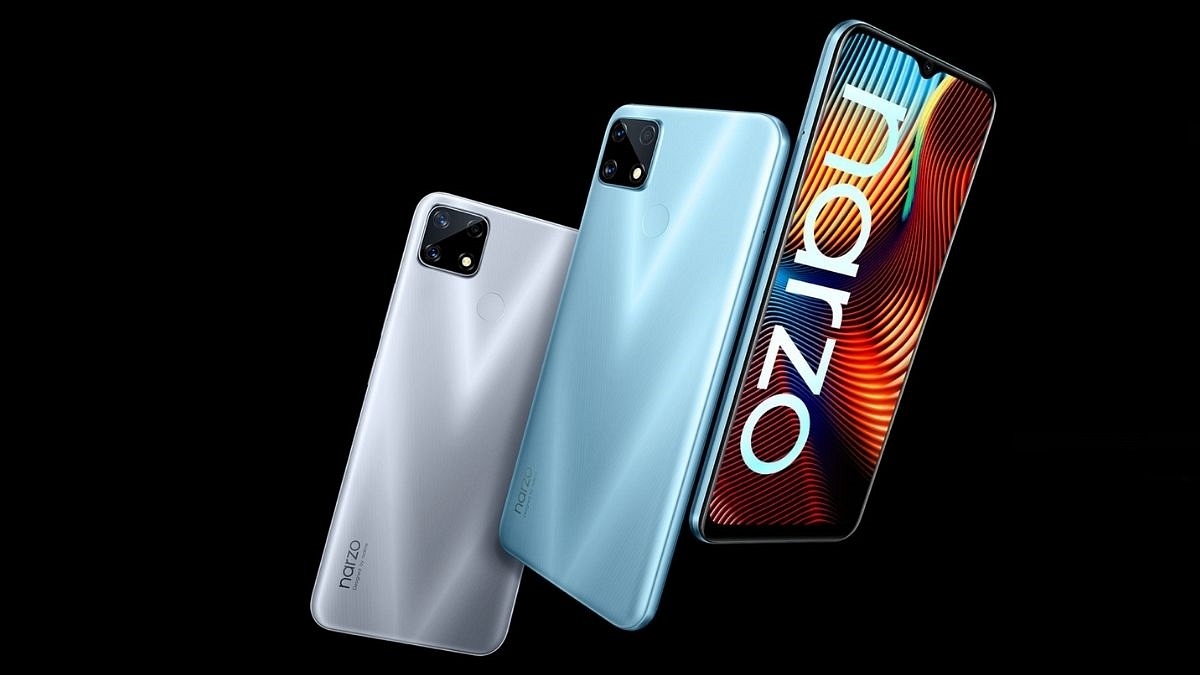Affordable 5G phones are becoming all the craze of this season, Realme also wants a piece of the cake but does this small increment of an upgrade over the Realme Narzo 20 Pro worth your hard-earned money.
Multiple devices already have 5G connectivity but this upcoming device is by far the cheapest device on the 5G list. If we look into the features of this device, you might be slightly surprised by the design and performance choices that the brand has made to make it the cheapest 5G phone.
What’s in the box?
The folks at Realme have been kind enough to include the necessities that you would expect from an unboxing. A clear bumper case and, lo and behold, a 30 W charger with a cable. It is a type-c cable as you would expect from a smartphone in 2021, anything else would just be bothersome and obsolete.
At a glance, the back finish of the phone looks like its glass but has a matte plastic finish. It is not a cheap-feeling material per se but it is what you would expect from a smartphone in this price range(more on that later). The buttons are well placed and fit perfectly in the reach of your fingers.
The buttons themselves are tactile enough and the power button doubles as a fingerprint sensor, the sensor is quick enough and just requires a tap to unlock the phone.
Display & Multimedia
It’s not a fancy AMOLED but you do get an FHD IPS LCD panel with an incredibly high refresh rate of 120Hz and a touch sampling rate of 180Hz. With a 90% screen-to-body ratio it is not raising the stakes for anyone but at least it is trying to mirror the flagships.
The screen is fairly bright clocking in around 600 nits but it has okayish viewing angles, so media consumption in the sun is a decent experience. Speaking of media consumption, the audio produced by the single down-firing speaker gets adequately loud because of Dolby Atmos’ integration. All in all, the 6.5-inch screen paired with the speaker provides a decent multimedia experience.
Performance
The specifications on this device are a very good bargain, such parts are generally seen in devices that are priced higher compared to the Narzo 30 Pro. It has UFS 2.1 storage and the latest LPPDR4X RAM.
The chipset is a MediaTek Dimensity 800U based on the much improved 7nm process. For this price range, the performance this chipset provides is worth every penny. There are no jitters or lag during everyday use but the chipset performs the best under gaming load.
Graphic intensive games run smoothly on medium to high settings at acceptable framerates without lagging or other hiccups.
Connectivity & Performance
The main feature of this phone is its 5 G connectivity but that feature gets sidelined due to a lack of 5G towers in our country. Both the sim card slots support 5G standby and also support dual 4G VoLTE standby. A dedicated SD card slot would have been nice to see since the base model of this phone only has 64GB of storage. Bluetooth 5.1 and Dual-Band Wi-Fi are available so that you can connect at much faster speeds than before.
Battery
This phone has a battery capacity of 5000 mAh. This doesn’t seem like a considerable increase compared to the last gen’s4500mAh. We would have preferred if the brand would have lowered the battery capacity instead of lowering the charging speed. The phone charges up to 50% in 25 minutes. There is also support for 15W charging if you are using a power bank.
Camera & Video
Realme has decided to go with a more practical approach with this iteration of the Narzo Pro series. There are only three cameras as compared to the four cameras that the last-gen came with. These three being the main 48 MP sensor, the 8MP ultrawide sensor, and a frustrating 2MP macrosensor.
The front selfie camera is a 16MP sensor with the usual AI gimmicks incorporated into the built-in camera app. T In normal conditions, the images may still seem a bit washed out at times. There is support for 4K 30fps video recording and slow-motion video recording at 240fps.

